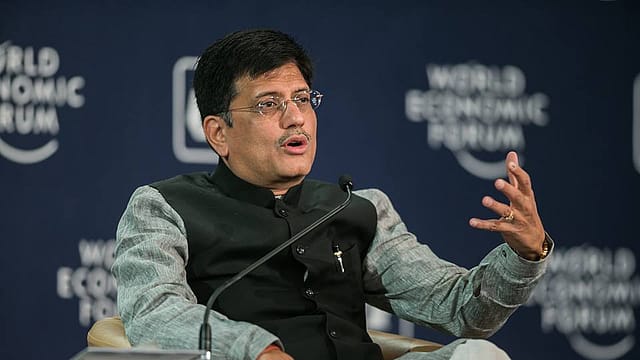Govt mulls new mechanism to resolve bad loan problem of banks
ADVERTISEMENT

After introducing, tweaking and then re-tweaking the Insolvency and Bankruptcy Code (IBC), the government on Friday announced another step in its efforts to tackle the massive bad loan problem plaguing the Indian banking system.
Interim Finance Minister Piyush Goyal, after a meeting with 12 public sector bank heads in Mumbai, announced that a committee has been formed to look into the possibility of setting up an asset reconstruction company (ARC) or asset management company (AMC) to take over the troubled loans of public sector banks. He added that the committee will be chaired by Sunil Mehta, non-executive chairman of Punjab National Bank, and will submit its recommendations within two weeks.
What will the new company do? It will look into and manage bad loans that are weighing public sector banks down. These bad loans will be transferred from the books of the bank to the new entity which will then take the resolution process forward, allowing the banks to focus on other banking functions. So, essentially, it would be a ‘bad bank’.
Indian banking is under severe stress and media reports say bad loans have surged to Rs 10.17 lakh crore. Despite the mounting bad loans, former RBI governor Raghuram Rajan was not in favour of a bad bank during his term.
SBI chairman Rajnish Kumar, who was at the meeting with Goyal, said the move would help PSU banks focus on regular banking activities. He added that stressed assets resolution was currently taking up a lot of time and effort, and the new entity would help the banks’ efforts improve credit availability.
January 2026
Netflix, which has been in India for a decade, has successfully struck a balance between high-class premium content and pricing that attracts a range of customers. Find out how the U.S. streaming giant evolved in India, plus an exclusive interview with CEO Ted Sarandos. Also read about the Best Investments for 2026, and how rising growth and easing inflation will come in handy for finance minister Nirmala Sitharaman as she prepares Budget 2026.
Banking expert Ananth Narayan was optimistic about the idea. “Many countries have implemented this in the past. While some of them had indifferent results, some like Malaysia post the Asian crisis were quite successful. We could learn from such examples,” Narayan said. He added that managing stressed assets and recovery is different from regular commercial banking and requires a different approach than an ARC/AMC can bring.
Goyal also announced that all vacant executive positions at PSU banks would be expeditiously filled in the next 30 days. Analysts across the board viewed this as a positive step.
Goyal said that during the meeting, which included a presentation from SBI, some banks agreed to set up an oversight committee comprising retired judges and former Central Vigilance Committee officers to bring a level of external expertise and enable faster decision-making for public sector banks.
On improving credit flow, especially to MSMEs, it was announced that P.S. Jayakumar, MD and CEO of Bank of Baroda, will join some of the other PSU bank heads to come up with a solution to cases where a ‘good’ borrower could face difficulty in obtaining credit due to lending restrictions on banks under prompt corrective action.
Jayakumar said a consortium of banks could address the issue and a bank with adequate capital could step up to take the place of a bank which is unable to lend. “We will make sure that good accounts for which loans have been sanctioned will not face a delay in getting credit,” Goyal said.
On the possibility of consolidation of PSU banks, Goyal maintained the government believed in the autonomy of banks and that was a call the banks would take. SBI chairman Rajnish Kumar, however, hinted at more consolidation going forward. “Currently, India’s banking system is fragmented… If you compare with global standards, the size of Indian banks is very small… If India needs to continue its growth story, the bank will need scale,” he said.
Market expert Prakash Diwan called the announcements a positive step. “The setting up of a bad bank will allow the banks a second chance. All the bad loans will be taken away and the banks can then start afresh. Consolidation of PSU banks will help reduce their number and help the RBI give out more licenses to private banks, bringing some balance to the sector. Currently, there are 21 PSU banks and around 11 private banks, so the ratio is skewed.”
